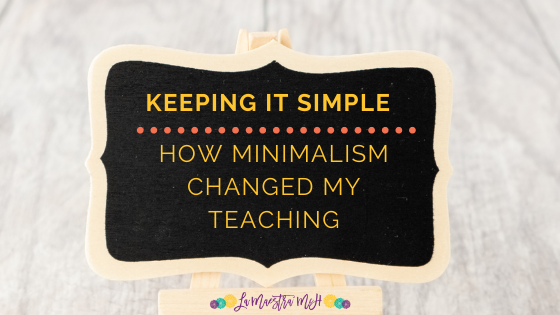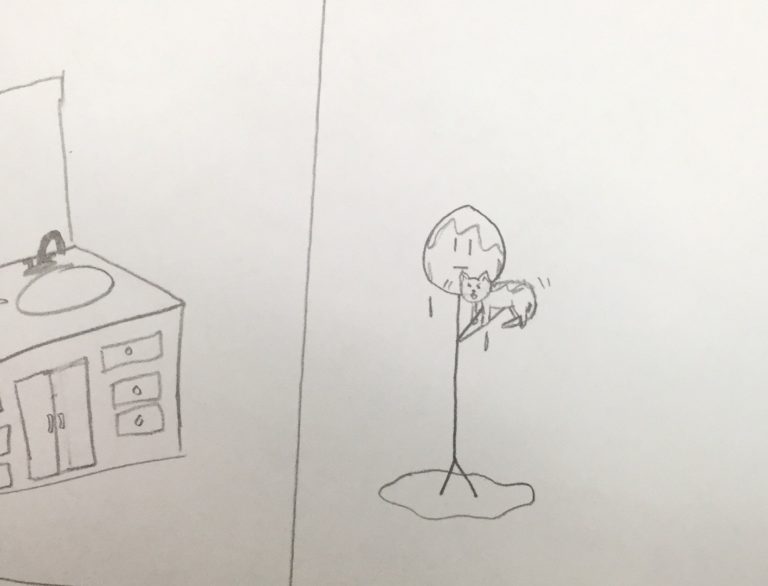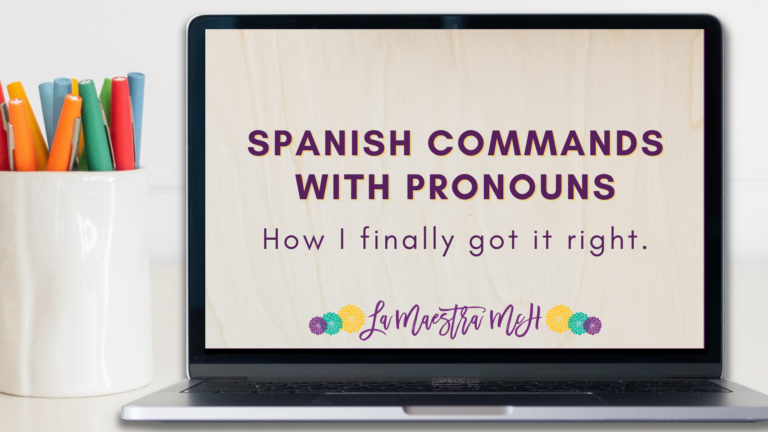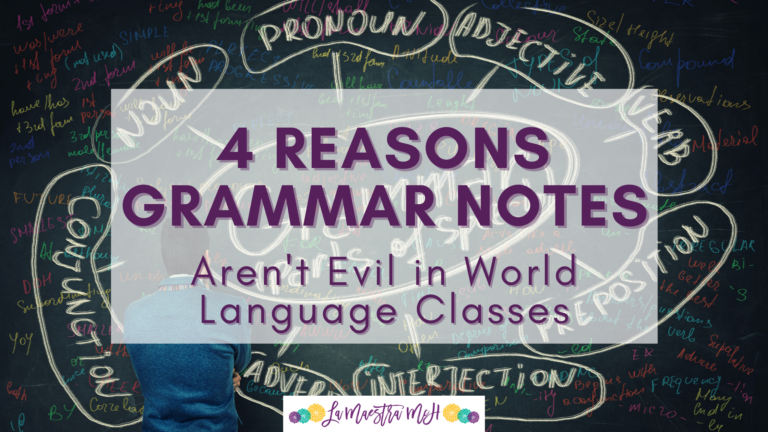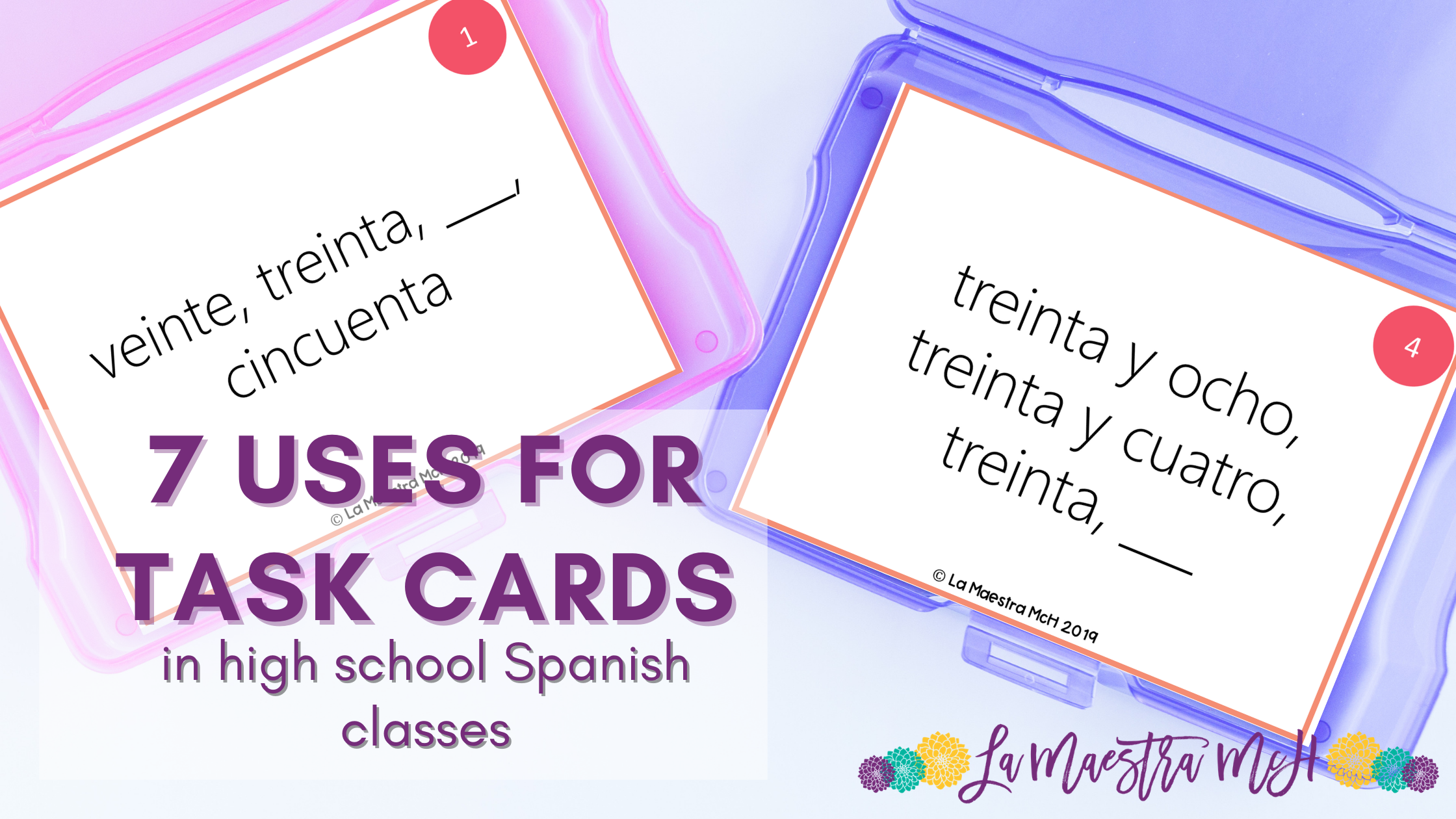Why I Began Making my Own High School Stories and Materials
You know what you want to teach. You know how you want to teach it. The problem? You can’t find the right Spanish resource to introduce/practice/work with/reinforce it. What’s the solution? Make your own! It’s not as hard as you think.
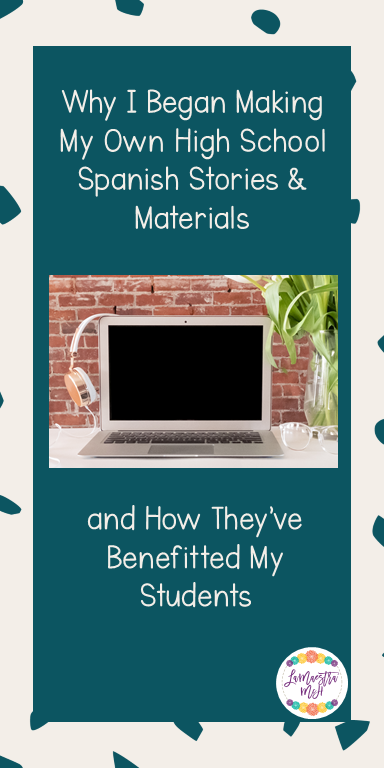
I entered teaching through a non-traditional route so never had a methods course on best Spanish teaching practices. Because of this, I taught Spanish how I learned it, with a text book. This wasn’t fun for the students or me. The activities were cheesy (and not in the good way), uninteresting, disconnected, and kind of wimpy.
Eventually I realized I could look online for Spanish resources. However, I couldn’t find what I wanted/needed. What I found was too juvenile for my high school Spanish classes. What I ended up using still didn’t feel like “me” and “my class”. So I began making my own Spanish short stories and activities for high school classes.
Here are the benefits I’ve seen in my classes:
- Increased student interest and engagement
- Students are more willing to stick with a Spanish story and work on reading comprehension because they want to see what happens
- I’m able to easily personalize the materials and extension activities to my students interest
- Students are more motivated to create their own stories
Not going to lie, it was difficult at first. As the years have gone on, it’s gotten easier and I’ve found the activities that work for me and my classes which I can adapt to any short Spanish story. For example, I love to chunk a story and have students read and draw it. I go about creating materials a few different ways:
- Think about how I use the target words/structures in the real world and go from there
- Adapt whatever pop culture fad my students are currently obsessed with
- Have students help me
Student created Spanish stories are the best! For example, the story in which a guy’s pet snake eats his best friend’s cat (or does it?) was first drafted with a Spanish 1 class! I later added to it, built it up and plan to use it with upper level classes for preterite and imperfect review, Spanish reading comprehension practice, and to introduce the past subjunctive and conditional tenses. It took some time to bulk up the story but I’ll probably get three 90-minutes classes out of it!
Another student-created story example is the story of a narwhal setting out on an adventure to meet his unknown cousin who happens to be an octopus (Wait, how is his cousin and octopus? Did his aunt marry an octopus? How did he not know about this cousin? Tons of review opportunities here!). The focus of the story is actually the uses of saber and conocer!

Yay narwhals!
The Spanish stories and materials I create feel like me and they work in my classroom. They might not be for everyone but creating my own Spanish stories and activities has made teaching more fun and more effective in my classes. I’ve seen student engagement increase, and seeing me use my own voice has helped students find their authentic voices when writing Spanish.
If you’d like to learn more about or use the quirky Spanish stories I’ve written for my high school Spanish classes, you can find them below!
La familia Lopez – Reflexive vs Non-reflexive Verbs
Saber vs Conocer Narwhal Story
La mascota de Abram – The one where the cat gets eaten by a snake (maybe…)




